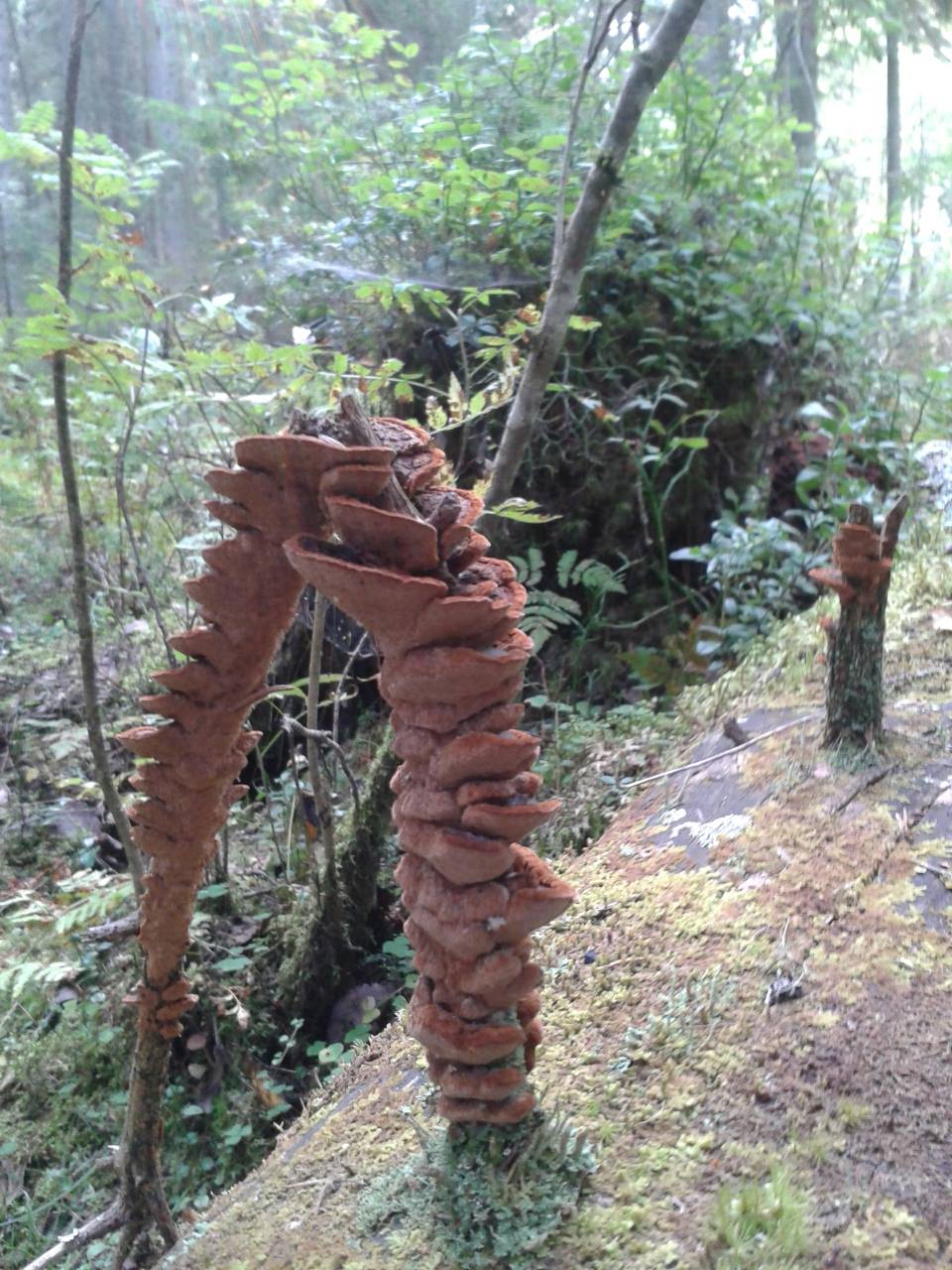
In the “1KFG: Deep Sequencing of Ecologically-relevant
Dikarya” project (CSP1974), we aim to sequence additional
sampling of genomic diversity within keystone lineages of
plant-interacting fungi and saprophytic fungi that are of special
ecological importance for understanding terrestrial ecosystems. In
addition, comparative genome analysis with saprotrophic,
mycorrhizal and pathogenic fungi will provide new insights into the
specific and conserved adaptations associated with each fungal
lifestyle.
Phellinus viticola (Schwein.)
Donk
Phellinus viticola is a basidiomycete belonging to the
family Hymenochaetaceae. Members of this family are primarily
lignicolous species playing a significant role in the ecological
functioning of forests but other species vigorously kill standing
trees. P. viticola is one of the very rare
Phellinus generalist species that occur on both conifers
and hardwoods in Northern Europe. Despite the extensive butt rot
and the considerable number of fruiting bodies at the base of
recently fallen trees, it is unknown to which extent can P.
viticola have a latent pathogenic activity on standing spruce
trees- dominating host in boreal forests. However, the occurrence
of P. viticola on fences clearly indicates that the
species can decompose wood as a saprotroph.
P. viticola strain PhevitSig-SM15 was isolated from
decayed Picea abies sampled in Sigdal, Buskerud,
Norway.
Why sequence the
genome?
The availability of a reference genome will first help to support
our ongoing research based on population genomics studies at both
fine scale (forest) and broader European scales (Norway, Sweden,
Finland, Russia and Poland) using RADseq and whole genome
re-sequencing. Besides, together with Phellinus spp. and
closely related genera being sequenced, a genome of Phellinus
viticola will help in resolving the phylogenomics
relationships of Phellinus, one of the largest and most
important genera represented in Fennoscandia.
Researchers who wish to publish analyses using data from
unpublished CSP genomes are respectfully required to contact the PI
and JGI to avoid potential conflicts on data use and coordinate
other publications with the CSP master paper(s).
